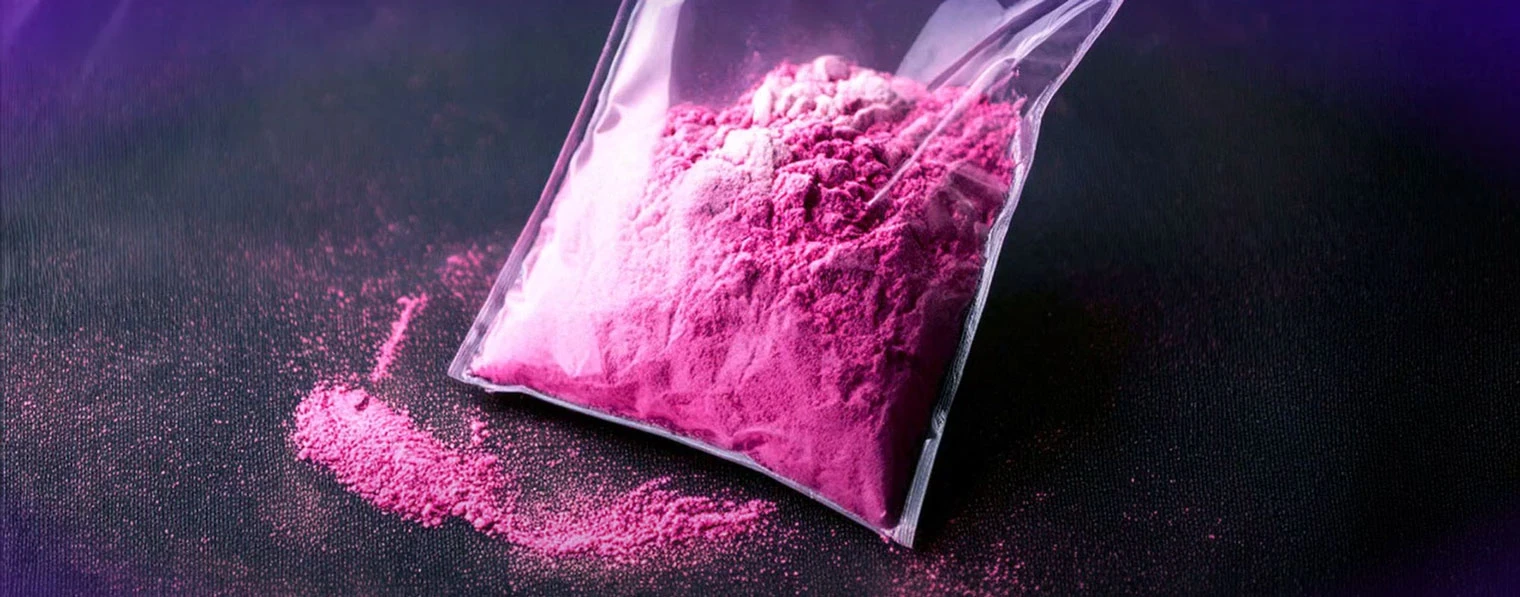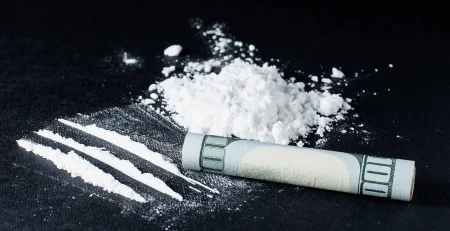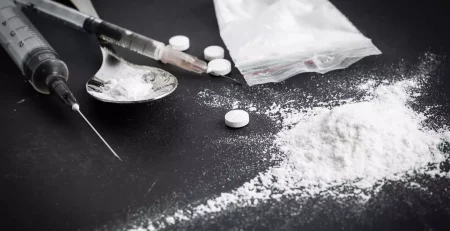What is Pink Cocaine?
Understanding the Tuci Drug and How it Differs from Cocaine
Despite all the recent attention to pink cocaine in the news, did you know that the Drug Enforcement Agency (or DEA) does not classify ‘pink cocaine’ as “a common drug?” On the other hand, while many try to understand ‘what is pink cocaine’, there have been reports of exposure to this new type of psychedelic drug.
But, is it a new drug? Unlike regular cocaine (the white powder), pink cocaine is different chemically. It is a synthetic drug cocktail that is slowly becoming very popular in the club scene. It contains psychoactive substances like ketamine, MDMA, and methamphetamine – and food coloring for the pink shade that gives it a name.
According to the American Association of Poison Control Centers, there were five incidents of exposure to pink cocaine. It is also referred to as tusi and has led to critical conditions in nearly three of those exposures – with life-threatening symptoms, we might add.
If you or a loved one is struggling with drug abuse, it is time to get help. At Icarus Behavioral Health in New Mexico, we offer a compassionate and supportive environment to help you recover. Get a confidential consultation today.
What Are the Origins of Pink Cocaine?

Some people call pink cocaine “Tusi” which first emerged in Latin America – in Columbia, to be specific. It became popular in nightlife circles there and the name comes from the hallucinogenic compound in pink cocaine, 2C-B (i.e., the phonetic translation to Tusi).
The hallucinogenic compound found in pink cocaine has adverse effects on health and can be dangerous, whether in pill form or any other. However, that happens when you consume it in high doses which may increase the risk of addiction, along with heart problems.
Early on, 2C-B was found to have therapeutic uses but it quickly fell into the “psychedelic drug” category due to its adverse effects – and the potential for abuse. But modern pink cocaine rarely contains 2C-B.
Unfortunately, the substance linked to Sean ‘P Diddy’ Comb, along with Liam Payne’s death, contains a rough, powdered mixture of various substances. It might contain opioids and stimulants like caffeine. And not only that, the composition varies widely, depending on the source.
Get Effective Cocaine Detox and Rehab Options – Call Now!
What Is in Pink Cocaine?
What is pink cocaine? It is a dangerous drug cocktail, a powdered mixture of multiple substances that make it a hazard to your health – and others. It is a mix of MDMA, ketamine, and methamphetamine. It has an appealing appearance because of the pink food coloring which gives the younger audience a deceiving “harmless” impression.
Its bright pink color and the media spotlight has garnered increasing attention among popular street drugs. And the malevolent marketing tactics aim it at a younger audience with promises of “sweet additives” and sometimes “strawberry flavor”. Here is what an expert medical toxicologist will tell you about its chemical composition.
- Ketamine – It is a dissociative drug that has anesthetic and hallucinogenic properties.
- MDMA (ecstasy/molly) – This is a popular party drug – a stimulant and psychedelic drug – that raises heart rate and creates feelings of euphoria (often with high sensory perception).
- Methamphetamine – A dangerous substance that leads to addiction and is a strong stimulant that can affect your central nervous system according to a systematic review by the National Institute of Health.
- Caffeine – Some people add caffeine to pink cocaine mixture (substance combination) for stronger stimulant effects.
- Food coloring and flavoring – The pink food coloring and other flavoring give it the appealing look, and a sweet smell.
With all that, you get a dissociative drug which is a combination of dangerous street drugs. It is an actual “drug cocktail” – also linked to Liam Payne’s death recently by CBS news – with “unpredictable effects”. It can lead to euphoria which can quickly turn into an elevated body temperature and seizures.
Is Pink Cocaine Addictive?
Yes, pink cocaine is highly addictive. Its addictive properties come from stimulants like methamphetamine and opioids in its composition. These substances, like opioids, create a strong potential for dependency.
When people use ‘pink coke’ frequently, they build up tolerance. So, more consumption leads to a higher dependence, often bringing other drugs into the mix. As a result, the substances found in pink cocaine increase the risk of addiction, as well as overdose (due to their inconsistent and changing nature).
Is Pink Cocaine Different from Regular Cocaine?

The regular cocaine comes from the coca plant leaves. However, ‘pink cocaine’ is completely synthetic – at least in most cases. The regular one is primarily a “stimulant”. However, the pink cocaine contains ketamine, opioids, and other drugs.
This mix of hallucinogens and stimulants leads to more intense effects. In turn, there is higher risk – and incidences – of traumatic injuries, sexual assaults, and rarely, fatalities. Apart from these risks, the composition also varies widely.
Who is Using Pink Cocaine?
The most common users are among club enthusiasts and “recreational users”. It is mostly young adults and some people speculate that it is the sweet smell, pop culture mentions, and the appealing pink color that has led to more widespread use.
Get Accredited Treatment Programs at Icarus – Call Now!
How Do Users Consume Pink Cocaine?
It typically comes as a powder but the drug takes other forms too. Sometimes, pink cocaine can come in the form of pills that look like “fancy” medications.
- Snorting – Some users snort the pink cocaine which appears as the most common way to consume the drug and experience the effect almost immediately.
- Mixed with other drugs – Often, the users have it mixed with other drugs to increase the stimulant effect – and the risk of addiction and traumatic injuries (to themselves and others)
- Pill form – And some users ingest the drug as pills for convenient – and less traceability.
What the National Capital Poison Center Says About Pink Cocaine?
The National Capital Poison Center, in the US, has hinted at the indication of “fun” and “safe” in the marketing of pink cocaine. It appears as a “safer” alternative to the regular cocaine, which itself is a danger to overall population health.
Their organization has already warned about the nature of this street drug, one that often contains addictive substances, like ketamine and meth.
What Are the Health Risks of Pink Cocaine?

It is important to understand the health risks of pink cocaine. Knowledge of the substance is one of the first steps in choosing to seek out recovery, and being armed with knowledge is useful for many of the common substances that can be abuse. Whether pink cocaine, fentanyl, or alcohol, every substance comes with risks, and pink cocaine is no exception.
High BP and Heart Rate
Increased heart rate and blood pressure are common symptoms which lead to heart problems. They can progress to cardiac arrest and eventually seizures – and then death.
Seizures
Seizures are also a common consequence of taking high doses of pink cocaine – or any other drug like alcohol, MDMA, or ecstasy, for that matter.
Body Temperature Spikes
Abnormal body temperatures are often a common risk (and sign) of drug and alcohol abuse. They are often associated with dehydration and severe risk of heatstroke.
Mental Health Issues
Many people struggling with addiction also experience paranoia and panic attacks (and anxiety) immediately after stimulant use. As for the intensity of such effects, it is higher among new users.
Signs of Pink Cocaine Use (and Other Forms of Drug/Alcohol Abuse)

Do you suspect that someone might be struggling with addiction to drugs, hallucinogens, or pink cocaine? It is important to find the right treatment for them. Watch out for these signs if you sense pink cocaine use in someone:
- Physical symptoms – like dilated pupils, abnormally high heart rate, sweating
- Behavioral changes – confusion, paranoia, anxiety, erratic or impulsive behavior
- Health emergencies – seizures, fainting, severe dehydration
It is important that you speak to someone, whether an associate professor or a medical professional at Icarus Behavioral Health. A true and compassionate expert will help you find the right treatment for you and your loved one.
Up To 100% of Rehab Costs Covered By Insurance – Call Now!
The Path to a Drug-Free Life is Found at Icarus Behavioral Health
To combat this illicit drug use, and to keep our neighborhoods safe from such “pink powders” or other substances, it is important to raise awareness. But more importantly, it is crucial to find the right support and treatment.
At Icarus Behavioral Health, we have a team of experienced professionals at our accredited drug rehab that are ready to help you. In today’s drug landscape, a single unknown substance is the first step before individuals start to struggle with multiple drugs.
But don’t wait for that to happen. Let yourself and your loved ones receive the best treatment at Icarus, where professional support and tools will help you overcome addiction – and lead a healthier, substance-free life.
Contact us for a confidential consultation today.











